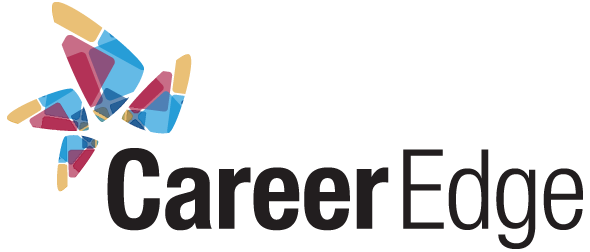
Finding employment in the fiercely competitive Canadian job market can be daunting. 80% of the job market in Canada is mostly hidden, so be sure to dig beyond the surface. Here are a few tips for finding a job to help you navigate job hunting in Canada effectively.
1. Explore Beyond the Mainstream Job Boards
While LinkedIn and Indeed are valuable resources, they’re just the tip of the iceberg. Many companies post job openings exclusively on their websites. Check the careers section of companies you’re interested in regularly.
Additionally, you can also use other job boards such as:
- Career Edge job board For newcomers, recent graduates, and people with disabilities
- Eluta.ca for Toronto jobs
- Workbc.ca For Jobs in BC
- Talentegg.ca for entry-level jobs
- Otta.com and weworkremotely.com for remote jobs
- Google jobs in your field to leverage Google Jobs
2. Optimize Your LinkedIn Profile
Your LinkedIn profile serves as your digital resume. Ensure it effectively showcases your skills, experiences, and achievements. Use keywords relevant to your industry to increase visibility. Request recommendations from previous colleagues or supervisors to strengthen your profile’s credibility.
Develop a personal brand that highlights your unique skills and strengths. Share relevant content, participate in discussions, and showcase your expertise through blog posts or articles. Consistency and authenticity are key to building a strong personal brand.
3. Connect With Recruiters on Linkedin
Do your own research to find recruiters who might specialize in the type of job you’re looking for. While connecting, be sure to include a message to let them know about yourself.
Your introductory message is crucial When contacting recruitment professionals on LinkedIn. Keep it concise, professional, and engaging. Here’s a template:
Hi [Recruiter’s Name],
I hope this message finds you well. I recently came across your profile and was impressed by your experience in [mention specific area of expertise]. As someone passionate about [industry/field], I’d love to connect and learn more about opportunities within your organization. Looking forward to potentially discussing how my skills align with your team’s needs.
Best regards,
[Your Name]
4. Network. Network. Network.
Whether you attend virtual or physical events, networking is key to uncovering hidden job opportunities. Attend industry events, business mixers, and professional gatherings. Engage in meaningful conversations, exchange contact information, and follow up promptly. Building genuine connections can lead to valuable referrals and insights into job openings. You can find events through Facebook, meetup.com, or eventbrite.com
Here are additional Networking and Job Searching Tips for Introverts
5. Engage in Job Forums and Groups
Joining online job forums and groups can be a valuable resource for job seekers. Platforms like Reddit, Quora, Fishbowl, and specialized forums related to your industry or profession often feature discussions, job postings, and advice from experienced professionals.
Participate actively in these communities by asking questions, sharing insights, and networking with other members. Additionally, seek out local or industry-specific job groups on social media platforms like Facebook and Slack, where members may share job leads, offer support, and provide feedback on resumes or cover letters. By engaging in these forums and groups, you can tap into a wealth of knowledge, expand your professional network, and stay informed about job opportunities in your field.
6. Utilize Career Counselors and Local Employment Services
Career counsellors and local employment services can provide invaluable support and guidance throughout your job search journey. Schedule appointments with career counsellors to receive personalized advice on resume writing, interview preparation, and career planning. Additionally, explore the services offered by local employment centers, which often include job search workshops, networking events, and access to job fairs. These resources are designed to assist job seekers in navigating the complexities of the job market and can offer tailored assistance based on your specific needs and goals. Don’t hesitate to reach out and leverage these professional services to enhance your job search strategy and maximize your chances of success.
7. Attend Job Fairs to Make Meaningful Connections
Job fairs provide an excellent opportunity to connect directly with hiring managers and recruiters from various companies and industries. Research upcoming job fairs in your area and mark your calendar for attendance. Before the event, prepare by updating your resume, practicing your elevator pitch, and researching participating companies.
During the job fair, confidently approach each booth, introduce yourself, and inquire about potential job opportunities or internships. Collect business cards and make notes to follow up with recruiters after the event.
Additionally, attend any workshops or seminars offered at the job fair to gain insights into industry trends and enhance your professional skills. Job fairs allow you to explore current job openings and provide a platform to network with industry professionals and expand your professional network. Take advantage of these events to make meaningful connections and advance your career goals.
8. Leverage the North American Job Market
Expand your job search beyond Canada and consider applying for positions in the United States.
With its vast array of industries and opportunities, the U.S. job market offers potential for career growth and advancement. Research companies and job openings across North America in your field of interest.
Tailor your resume and cover letter to align with U.S. standards, highlighting your relevant skills and experiences. Remember the differences in employment laws and visa requirements when applying for jobs in the U.S., and be prepared to navigate any potential challenges or restrictions.
Networking with professionals who have experience working in both Canada and the U.S. can provide valuable insights and connections to aid in your job search. By exploring opportunities across the North American market, you can broaden your horizons and increase your chances of finding the right fit for your career aspirations.
9. Harness the Power of Referrals
Personal referrals can significantly boost your chances of landing a job. Contact your connections and mentors with connections within your target industry or company. Ask if they can refer you to relevant job openings or introduce you to hiring managers.
Additionally, consider utilizing platforms like Refer.me or joining professional networking groups on platforms like LinkedIn, where members often share job postings and refer candidates for positions within their networks.
Cultivate these relationships by offering assistance and support to others in your network, and don’t hesitate to ask for referrals when appropriate politely. A strong referral from a trusted contact can often fast-track your application and set you apart from other candidates.
10. Exercise Caution with Spam
While exploring job opportunities online, it’s essential to remain vigilant and cautious of potential scams and spam. Scammers are becoming harder to detect these days, and they target desperate job seekers all the time. Here are a few tips to consider.
- Be wary of unsolicited emails or messages offering job opportunities that seem too good to be true.
- Verify the legitimacy of job postings and recruiters by researching the company utilizing platforms like Glassdoor
- Check their website, and review their online presence.
- Avoid providing sensitive personal information or financial details to unknown sources.
- Never pay your own money for anything, not even gift cards.
- Refrain from clicking on suspicious links or downloading attachments from unfamiliar emails.
- Trust your instincts and err on the side of caution when encountering any red flags or suspicious activity.
- Utilize reputable job search platforms and resources.
- report any fraudulent or deceptive practices to the appropriate authorities to protect yourself and other job seekers from falling victim to scams.
Navigating the Canadian job market requires persistence, strategy, and a proactive approach. Expanding your job search beyond traditional platforms, mastering the art of networking, and showcasing your unique value proposition can increase your chances of securing your dream job. Every interaction and opportunity is a stepping stone toward your career goals. Stay motivated, stay resilient, and success will follow.
Employ these strategies, adapt them to your unique circumstances, and watch as your job hunt transforms from a challenge into a rewarding journey toward professional fulfillment.



